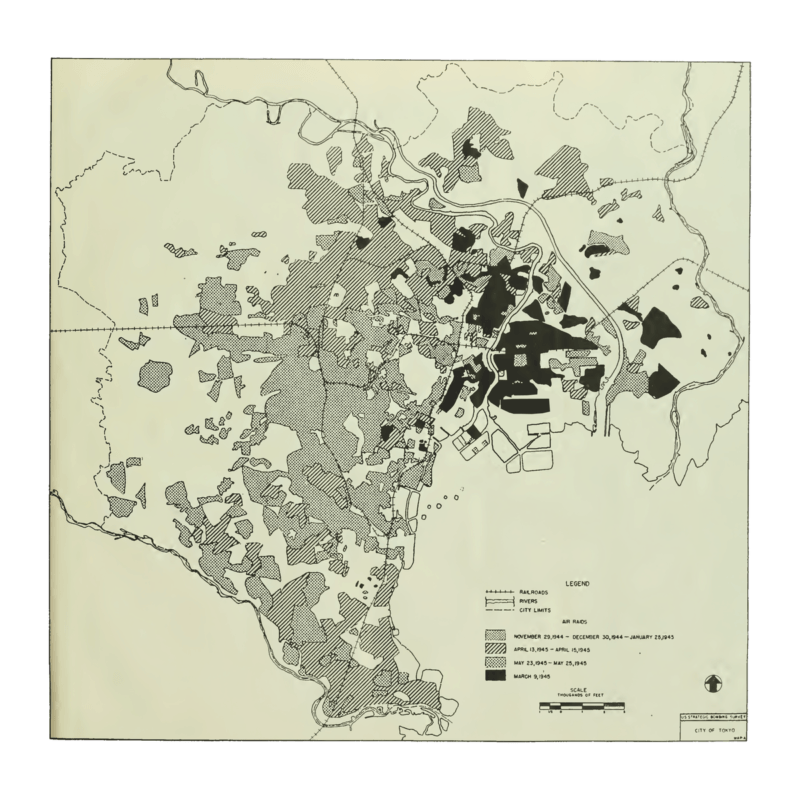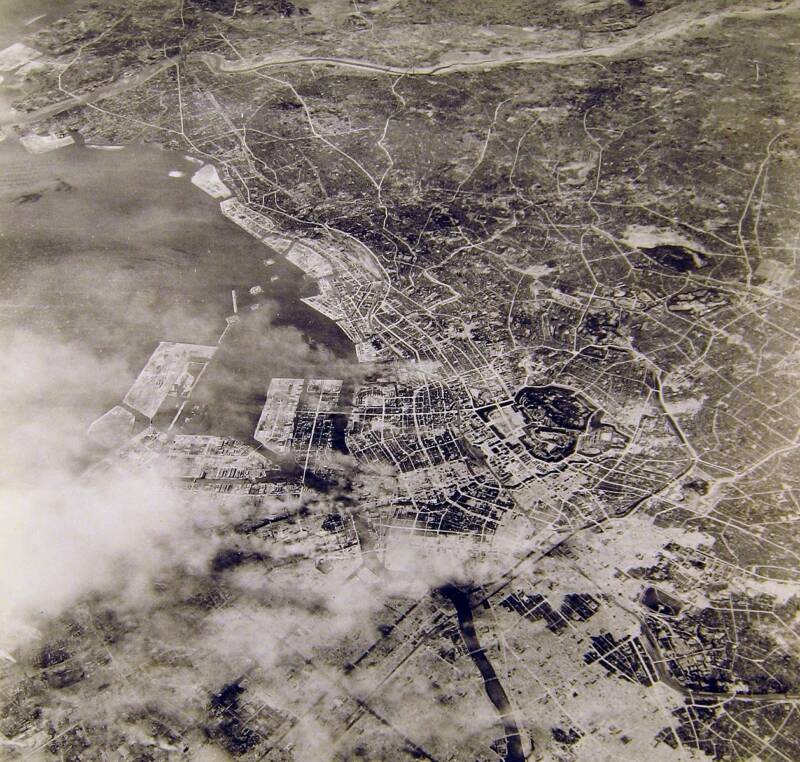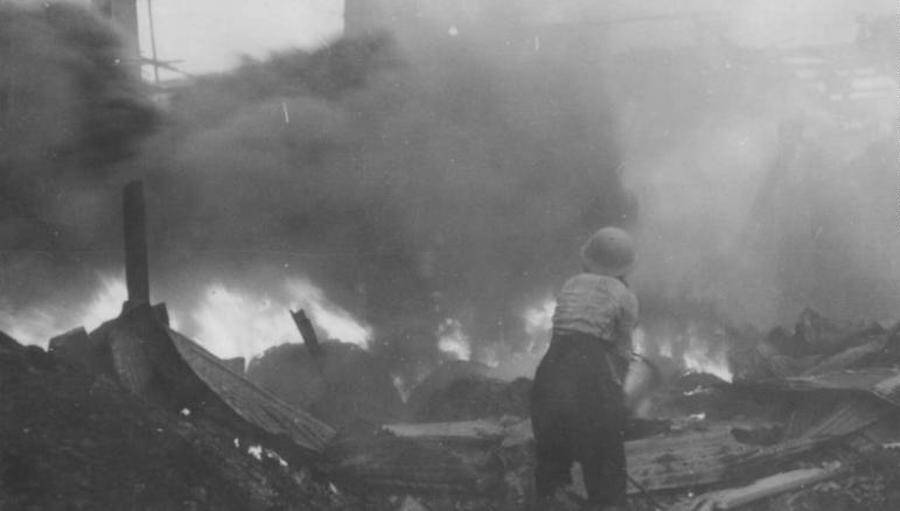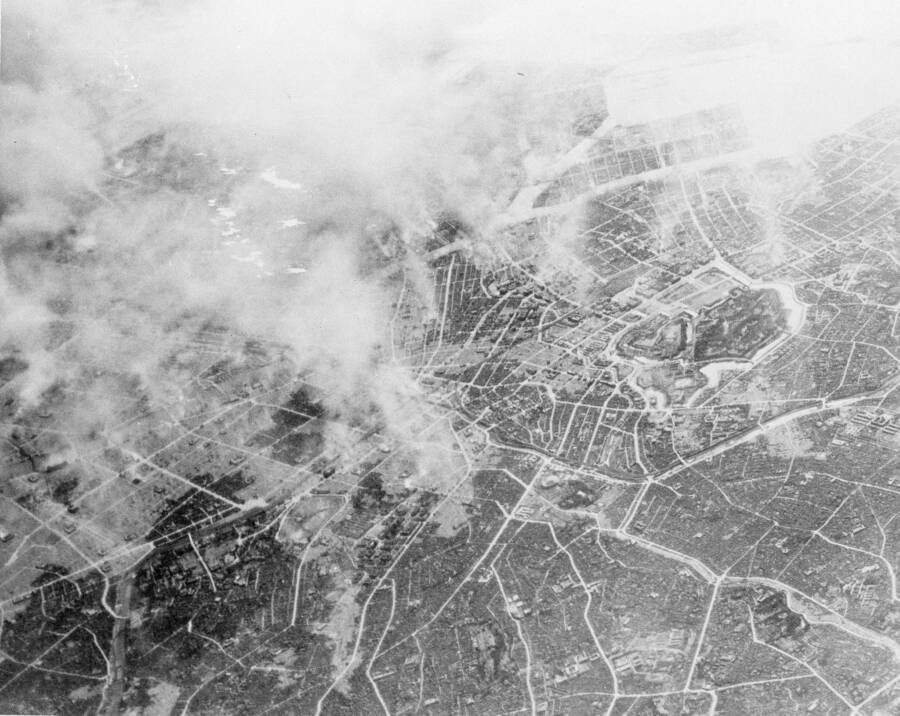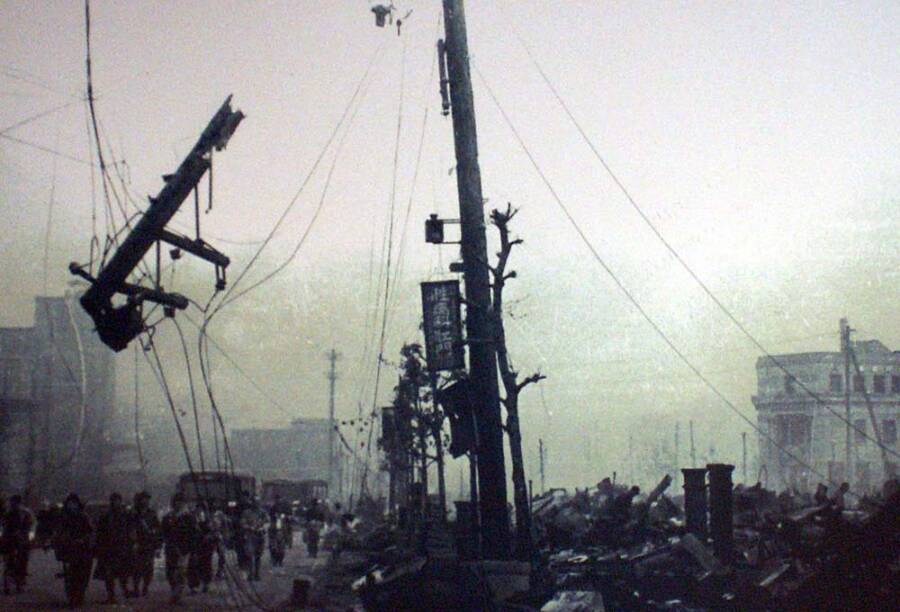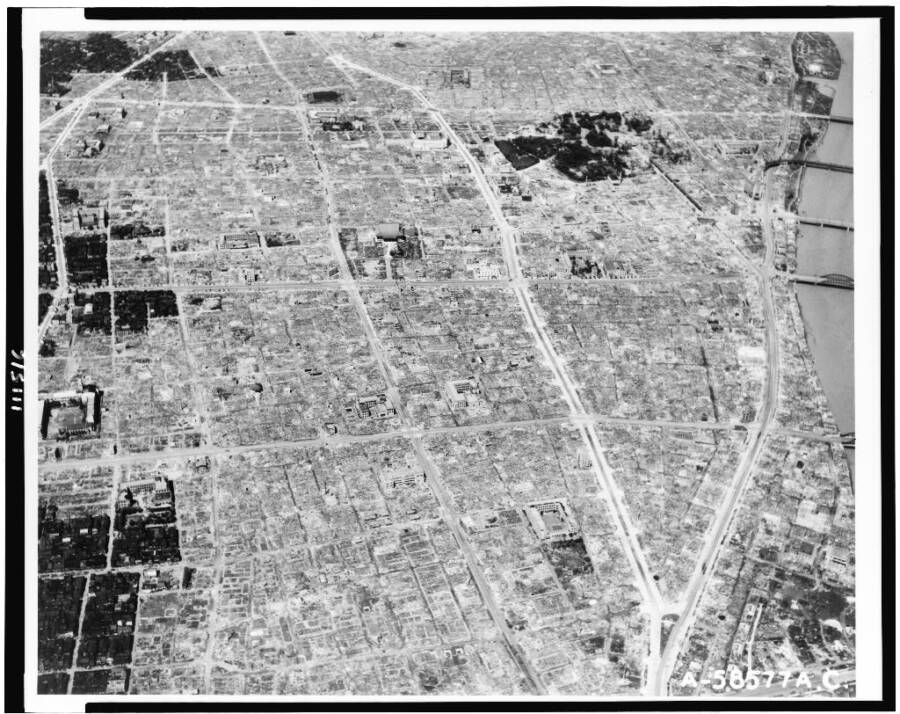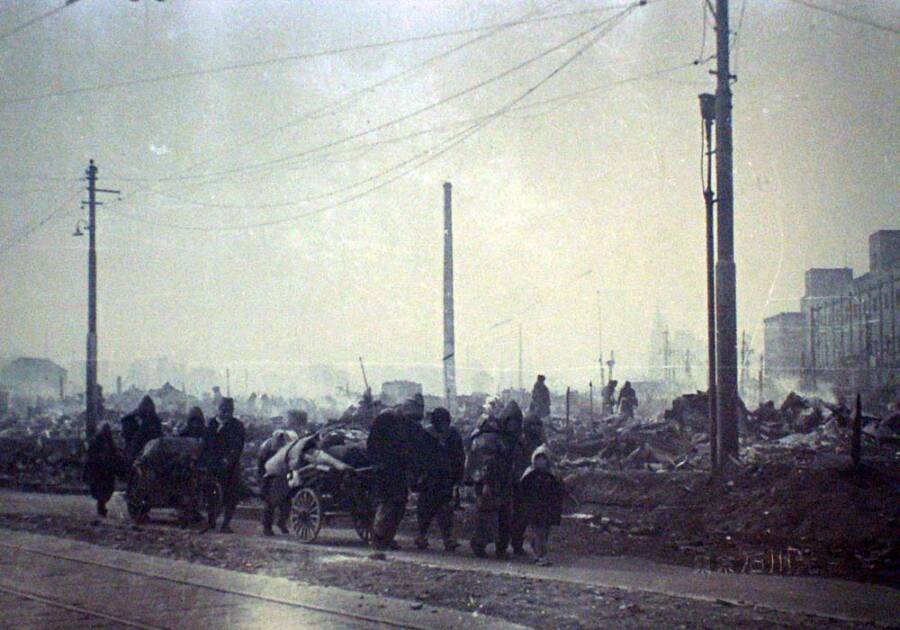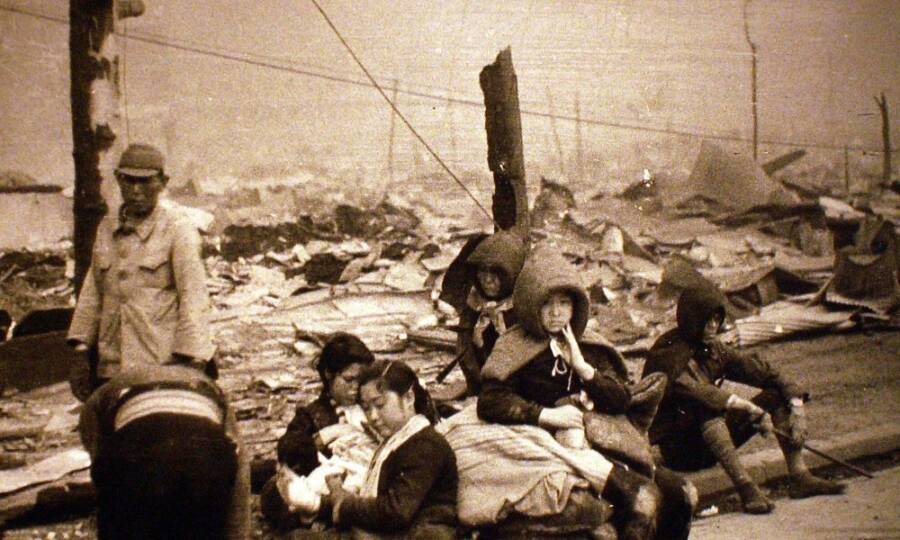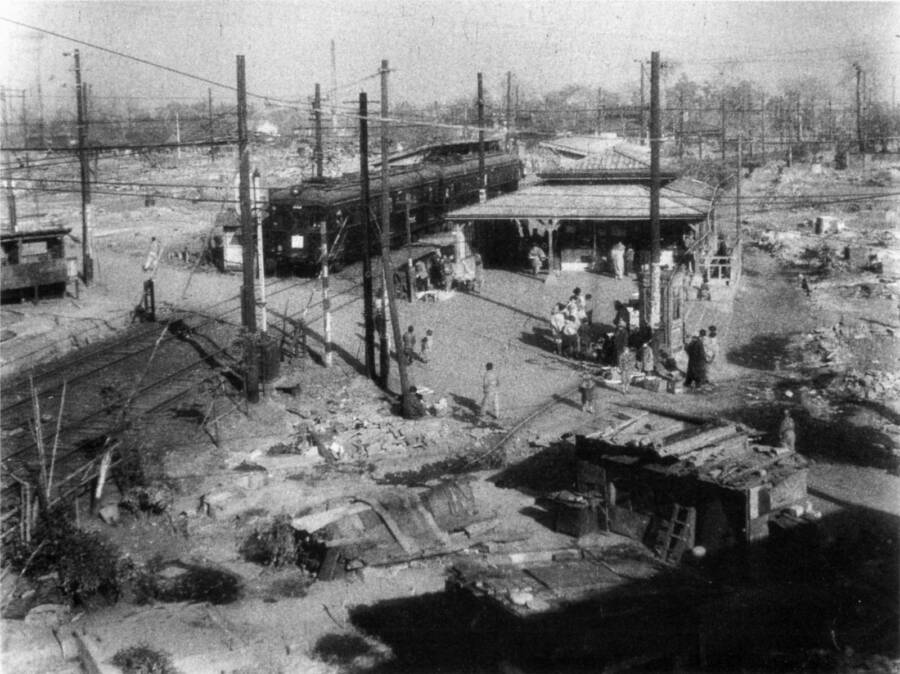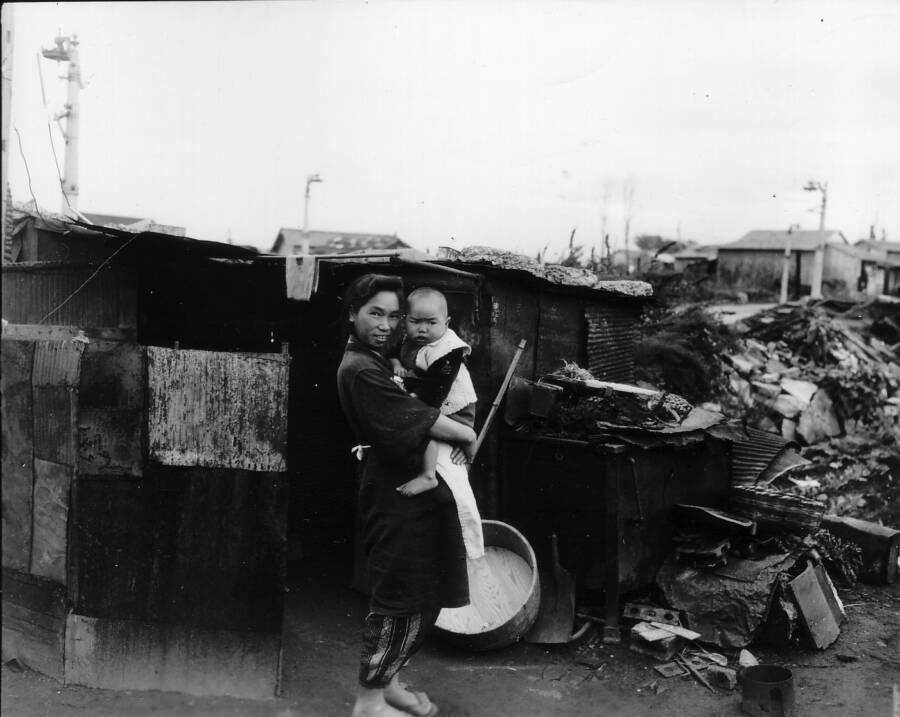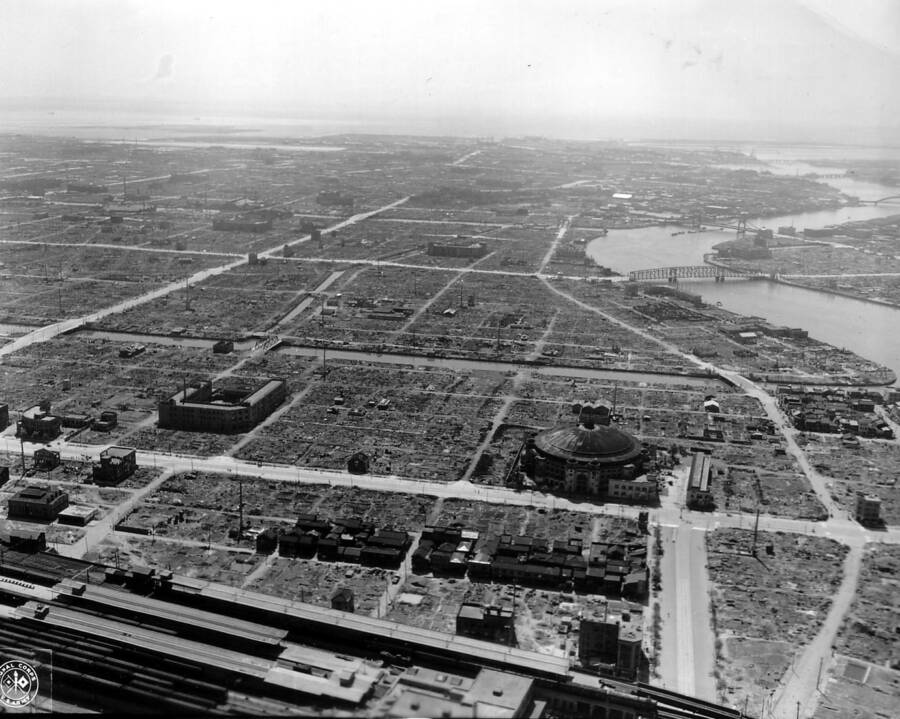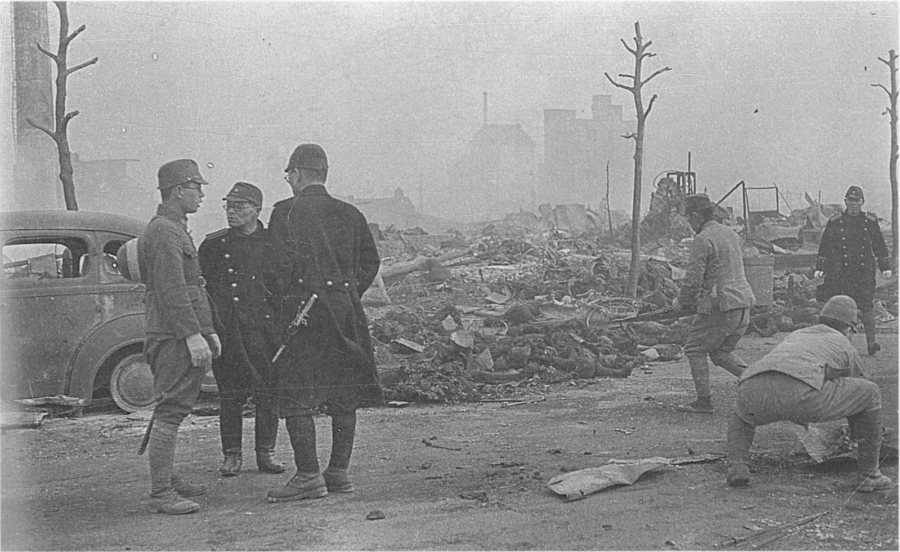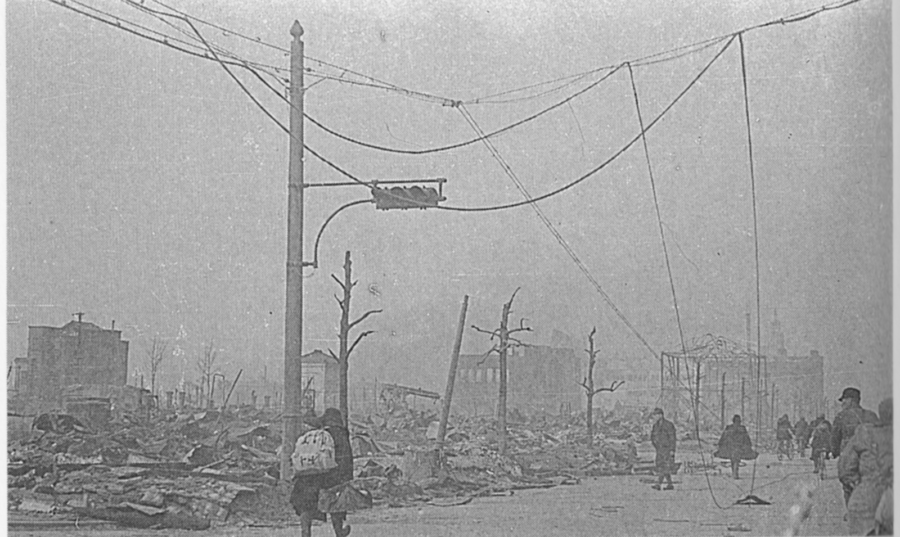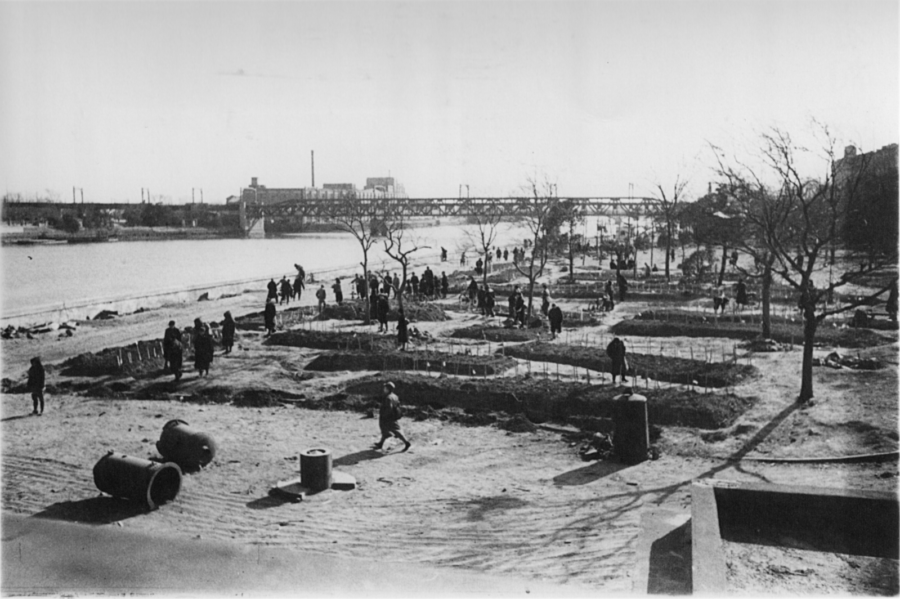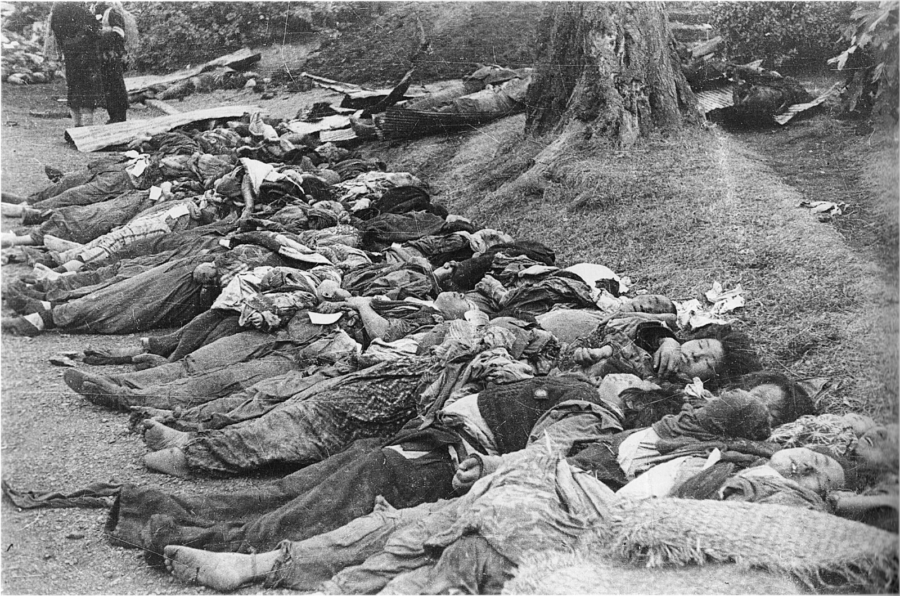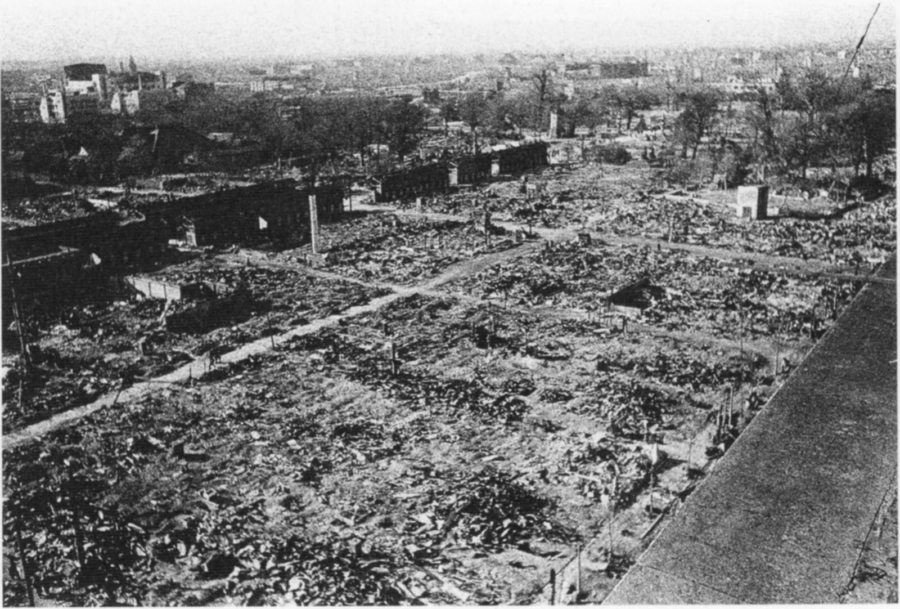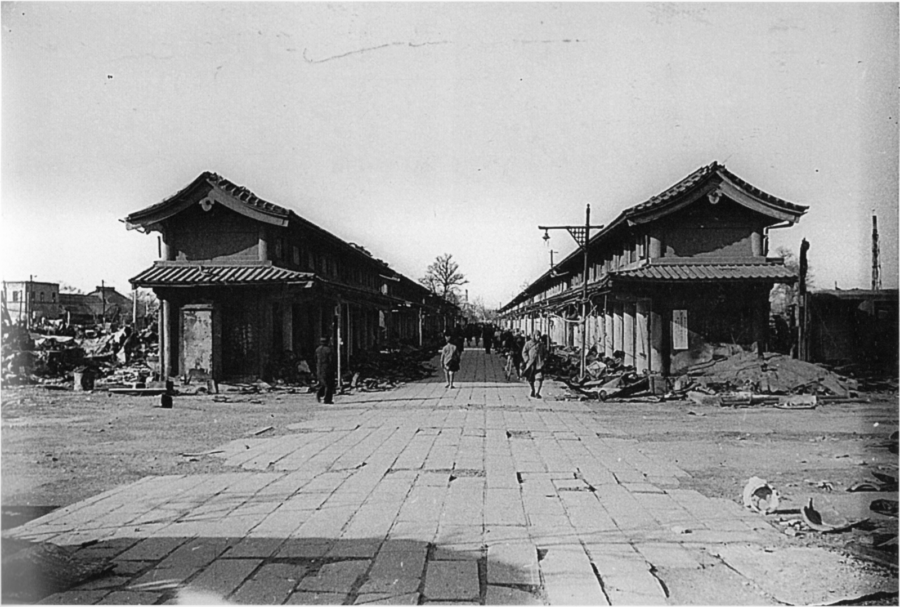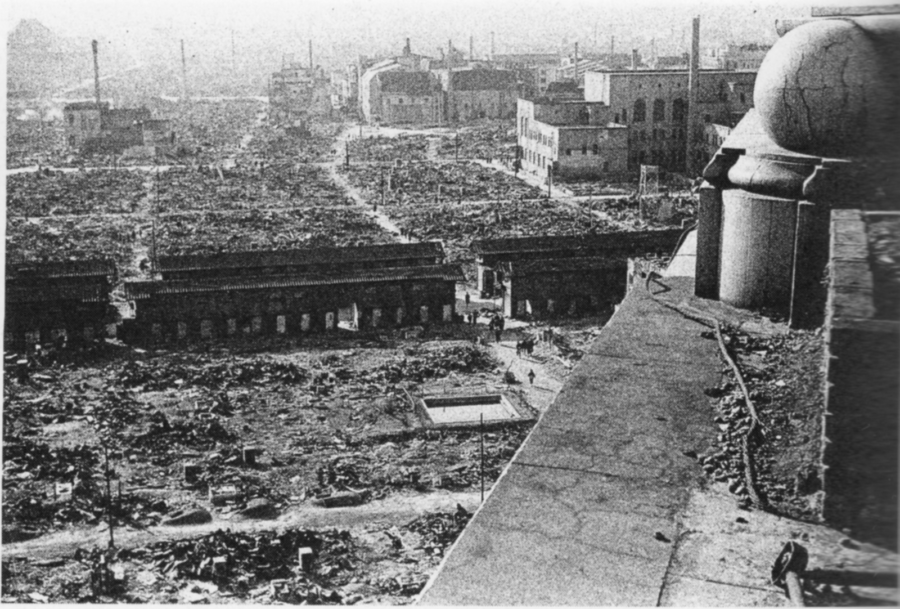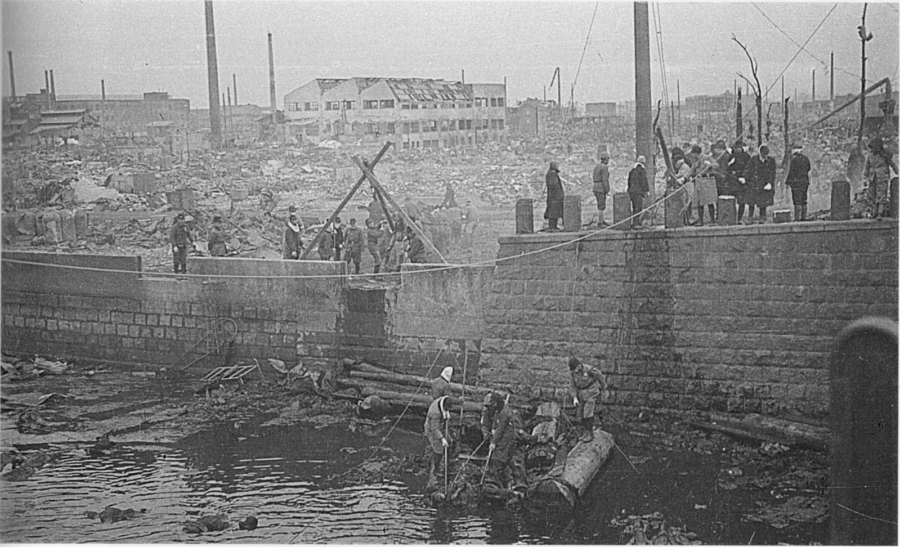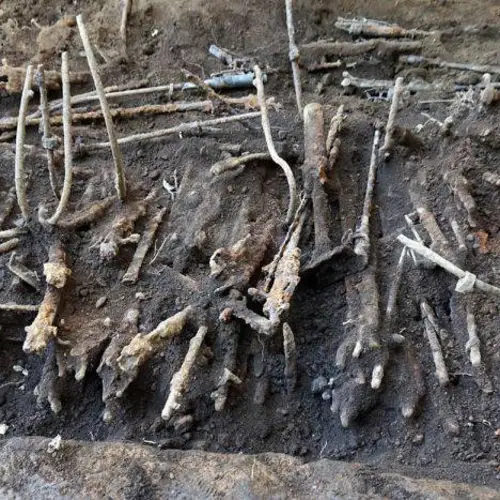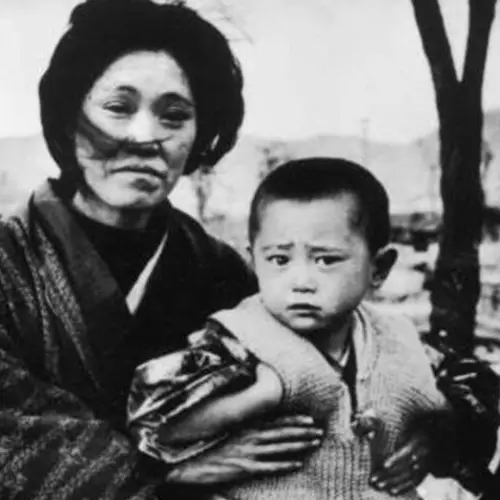On March 10, 1945, the U.S. Army Air Forces conducted history's deadliest air raid on civilians in Tokyo — leaving 100,000 people dead.
The firebombing of Tokyo in March 1945 — called Operation Meetinghouse by the Americans — would become the deadliest air raid in human history.
Early in the morning on March 10, 1945, terrified residents of Japan's capital awoke to an inescapable inferno. By the time the sun rose, 100,000 people would be dead, tens of thousands injured, and more than a million homeless.
The U.S. Army Air Forces (USAAF) had hit their targets. Tokyo, largely built out of wood, had been reduced to ash.
Haruyo Nihei was only eight years old during the firebombing of Tokyo. Even decades later, she remembers the "balls of fire" which consumed her city.
These 33 horrific photos of the Tokyo firebombing show the devastating impact of this horrific attack that's been mostly forgotten today.
How General LeMay Planned The Tokyo Bombing
Codenamed Operation Meetinghouse by the USAAF and known in Japan as the Great Tokyo Air Raid, the firebombing of Tokyo would bring hell to earth. Indeed, that was the point.
President Roosevelt had sent all warring nations a message pleading against "inhuman barbarism," in 1939. But that insistence vanished after the Japanese attacks on Pearl Harbor on Dec. 7, 1941. The U.S. drafted a list of targets to cripple Tokyo while avoiding an amphibious invasion of Japan.
This plan required the Americans to build bases in range of Japan's main islands. The 1942 invasion of Guadalcanal and the 1944 seizures of Saipan, Tinian, and Guam paved the way. The latter territories could now be used to build B-29 bombers — which could fly at over 18,000 feet and drop bombs out of the range of anti-aircraft guns.
However, initial attempts to bomb precise targets in Japan from high altitudes were unsuccessful, as the jet stream blew bombs off target and into the sea. These failures led the Americans to formulate a deadly plan of attack.
General Curtis LeMay, nicknamed "Iron Ass," formally took over XXI Bomber Command in the Mariana Islands in January 1945. Well aware that earlier attacks had been ineffective, LeMay proposed a new tactic.
LeMay instructed his men to fly at lower altitudes — as low as 5,000 feet — and do so at night to avoid anti-aircraft retaliation. This strategy worked well during a Feb. 25 air raid, so LeMay turned his sights on crushing Japan's resistance from its center — the Imperial capital of Tokyo.
Tokyo was a city largely comprised of wooden houses at the time. LeMay's strategy called for firebombs to ensure maximum destruction. The napalm-laden bombs would splash open upon impact and set everything ablaze.
As eight-year-old Haruyo Nihei prepared for bed on March 9, 1945, Operation Meetinghouse was in motion.
The Devastating 1945 Firebombing Of Tokyo
Late that evening, more than 300 B-29s departed their bases on Saipan, Tinian, and Guam. Seven hours and 1,500 miles later, they arrived above Tokyo. The first bombers set fires with small bombs at five locations. These would act as targets for all following bombers.
Between 1:30 and 3:00 a.m., Operation Meetinghouse began to firebomb Tokyo.
The planes dropped 500,000 M-69 bombs in total. Clustered into groups of 38, each device weighed six pounds, and each deployed batch spread out during descent. The napalm within each casing spewed flaming liquid upon impact and ignited everything in range.
Air sirens sounded. The city awoke. Some people left to find shelter but many didn't. Tokyo had been bombed before, but only once at night, and not by many aircraft. But as the planes descended so did the flames. Civilians fled in terror. No one had seen anything like this before.
Nihei awoke into a nightmare. The girl and her family shot out of bed and ran — outside, down the street, anywhere. Their quest for an underground shelter was successful, but her father feared that the people inside would burn to death. The family took their chances on the street.
The firebombs of Operation Meetinghouse created superheated winds that turned into tornados. Mattresses, wagons, chairs — even horses — were sent flying down the street. In places, the flames reached temperatures of 1,800 degrees Fahrenheit. Nihei quickly realized that people were burning, too.
In her mid-80s, she remembered that "the flames consumed them, turning them into balls of fire."
"Babies were burning on the backs of parents," she said, recalling the night of the Tokyo firebombing. "They were running with babies burning on their backs."
Nihei and her father became trapped at the bottom of a crush of terrified civilians. She distinctly remembers hearing their voices repeating the same mantra: "We are Japanese. We must live. We must live."
The night faded into daylight. The voices around Nihei had stopped. She and her father managed to escape the pile of people — only to find that the others had been burned to death. Dying, they had protected Nihei from the flames.
It was dawn on March 10, 1945. Nihei, her parents, and her siblings had miraculously all survived Operation Meetinghouse, the deadliest air raid in history.
The Aftermath Of Operation Meetinghouse
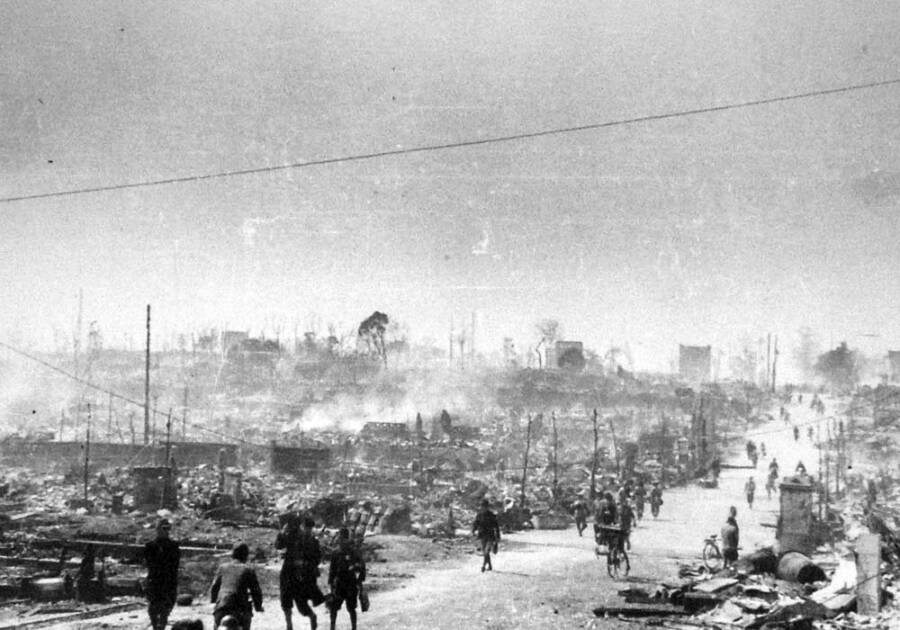
Wikimedia CommonsA road near Ushigome Ichigaya in Tokyo in mid-April after the bombings.
In one night, 100,000 Japanese people were killed. Tens of thousands — perhaps many, many more — were injured. Most of them were civilian men, women, and children.
The bombings of Hiroshima and Nagasaki are more commonly remembered for the horrific use of new weapons of war. But the human toll of the firebombing of Tokyo is equally devastating.
It's difficult to compare the casualties of the two attacks. In Hiroshima, between 60,000 and 80,000 people were killed instantly. In Nagasaki, about 40,000 were killed in the initial blast. Many more died of illness related to radiation in the ensuing years.
In the firebombing of Tokyo, 100,000 people lost their lives in a single day. By some estimates, that means that the fatal casualties of the Tokyo firebombing nearly matches the initial death count from the atomic attacks on Hiroshima and Nagasaki combined.
The Tokyo bombing also reduced 15.8 square miles to rubble, leaving a million people homeless overnight. As B-29 pilot Robert Bigelow wrote in his journal: "We had created an inferno beyond the wildest imagination of Dante."
He recalled his tail gunner notifying him that the glowing fires of the city they had destroyed were still visible when they were 150 miles away and headed back to base.
The sheer scale was unimaginable. And the hell for people living in Tokyo had not ended. Continued attacks reduced a further 38.7 square miles of Tokyo to ash from April to May
At one point, the B-29 base at North Field on Tinian Island was the busiest airport on Earth. Despite the strength of the Allies, Japanese prime minister Suzuki Kantaro wasn't giving up.
"We, the subjects, are enraged at the American acts," said Kantaro. "I hereby firmly determine with the rest of the 100,000,000 people of this nation to smash the arrogant enemy, whose acts are unpardonable in the eyes of Heaven and men, and thereby to set the Imperial Mind at ease."
However, following the unprecedented nuclear bomb attacks on Hiroshima and Nagasaki in August, Emperor Hirohito capitulated to the Allied powers. He announced to the nation that, "the enemy has begun to employ a new and most cruel bomb." The war was over.
"I didn't care if we won or lost as long as there were no fire raids," recalled Nihei. "I was nine years old — it didn't matter for me either way."
Reflecting On The Horrors of Firebombing Tokyo
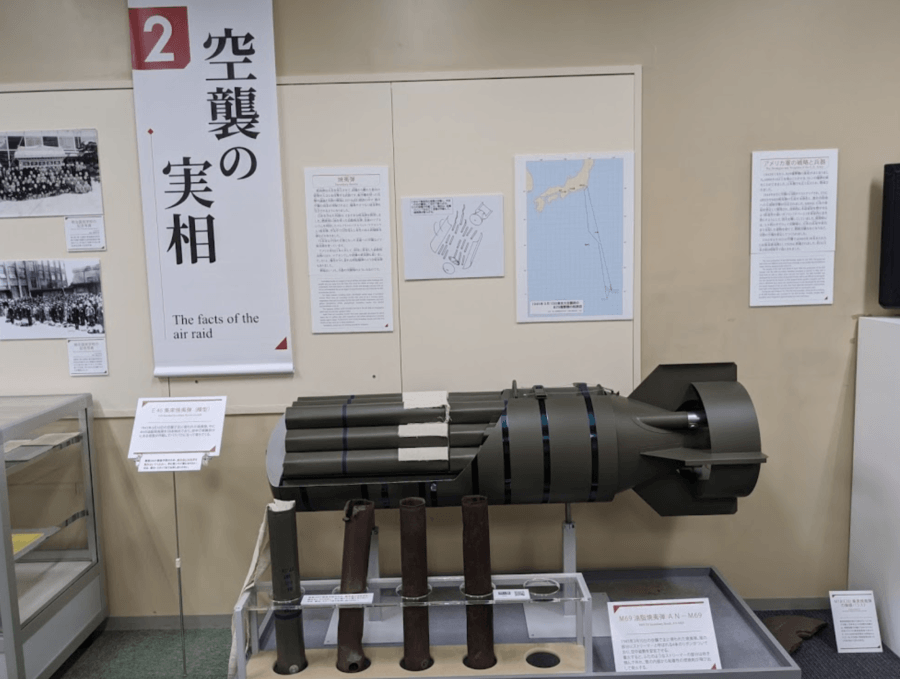
GoogleMapsInside the Center of the Tokyo Raids and War Damage museum in the capital's Koto ward.
"Killing Japanese didn't bother me very much at that time," said General LeMay. "I suppose if I had lost the war, I would have been tried as a war criminal."
Instead, LeMay was rewarded with several medals, a promotion to lead the U.S. Strategic Air Command, and a reputation as a hero. Even the Japanese government awarded him the First-class Order of Merit of the Grand Cordon of the Rising Sun for helping develop Japan's post-war Air Force.
LeMay died in 1990 at 84 years old. His fatal legacy of Operation Meetinghouse lives on in the Japanese people who survived the firebombing of Tokyo.
Katsumoto Saotome, who was 12 years old during the bombing, founded the Tokyo Air Raids Center for War Damages in the Koto ward in 2002. It aims to preserve the memories of the survivors.
Saotome's private museum — the city refused to fund it — includes artifacts and journal entries and has become the de facto exhibition on the Tokyo firebombing.
"For a child who did not know the true meaning of death or fear, March 10 was my first experience of that," Saotome reflected. "I have nothing to describe the memory of that night. It is difficult to talk about it, even now."
But for Nihei, facing her trauma proved cathartic. She visited the museum in 2002. "It brought back memories of that day," she said. "I really felt like I owed it to all those people who had died to tell others what happened that day."
One painting especially caught her eye. It depicted children on a cloud, sitting above the proud Tokyo skyline. Nihei, who lost six of her close friends in the firebombing, found some comfort in the painting. She said that it reminded her, "of my best friends."
After learning about the 1945 Tokyo firebombing of 1945, take a look at 37 devastating Hiroshima aftermath photos that show the destructive power of the atomic bomb. Then, learn about Operation Cherry Blossoms at night, Japan's failed plan to bomb the United States with the bubonic plague.

